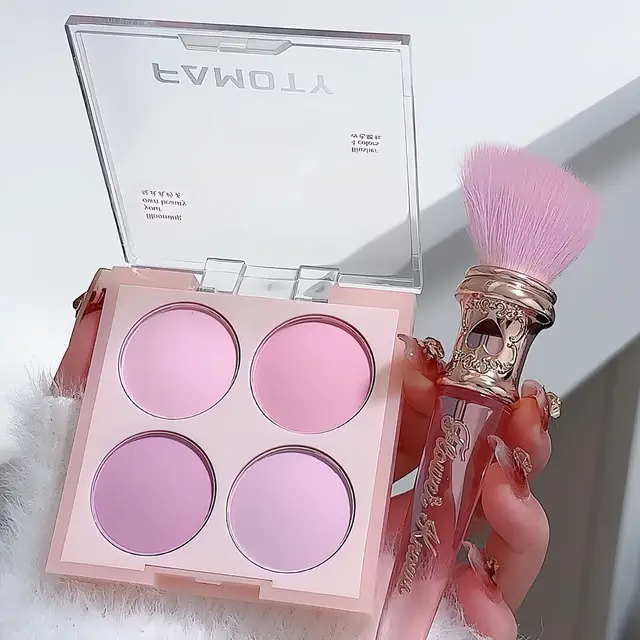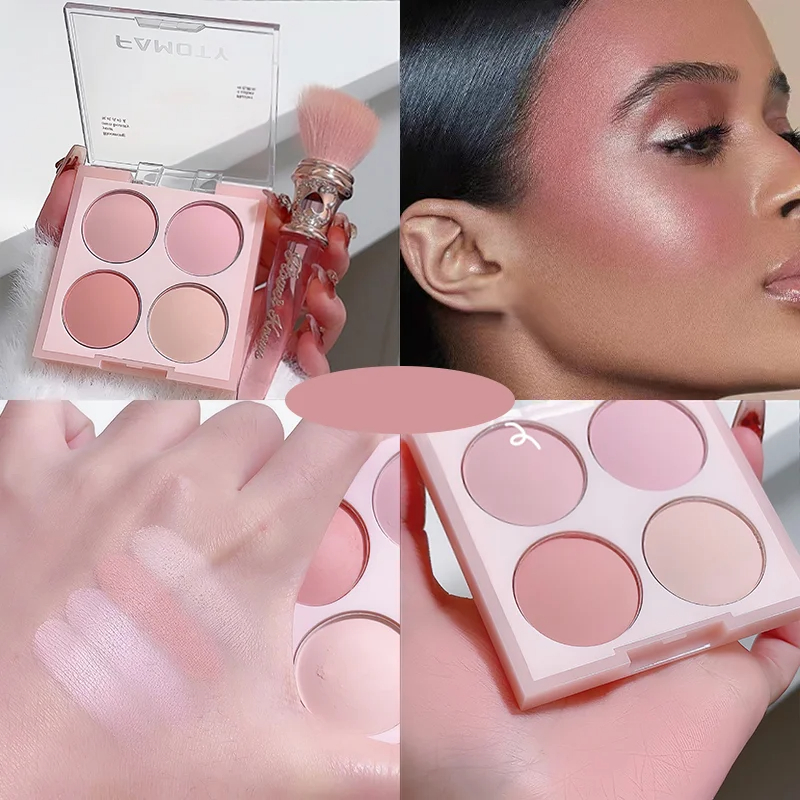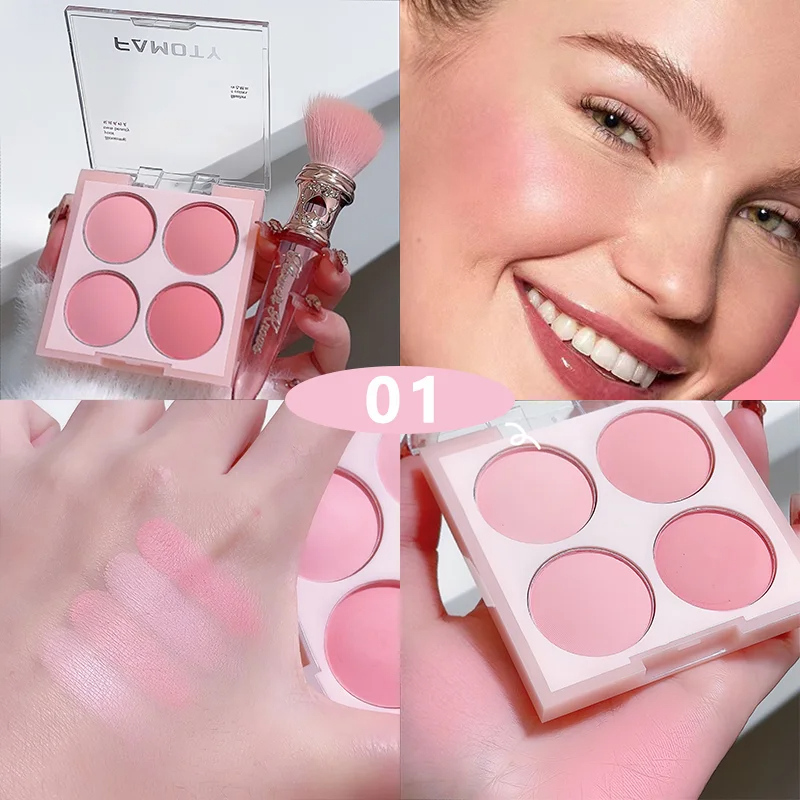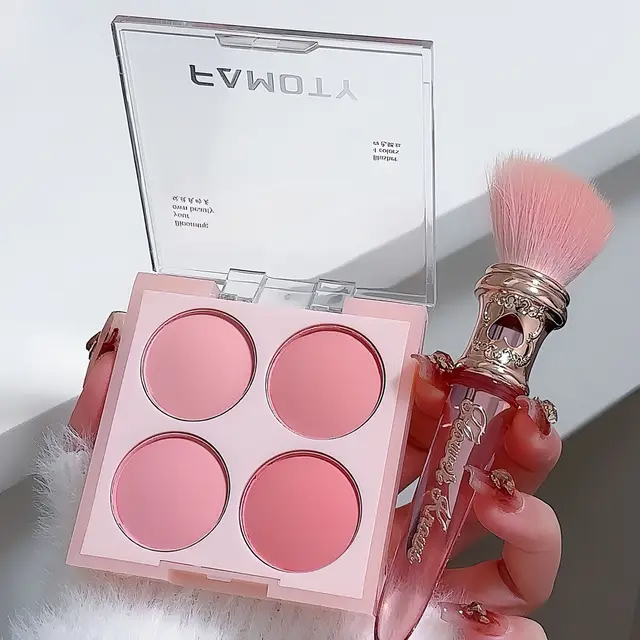Introduction
Blush is a fundamental part of any makeup routine. It adds a natural flush to the cheeks, creating a youthful and radiant appearance. However, applying blush correctly can be more challenging than it seems. The right technique can transform your look, while the wrong approach may result in an uneven or unnatural finish. This comprehensive guide will walk you through everything you need to know about how to wear blush, from selecting the right shade to mastering application techniques.

Understanding Blush: Types, Shades, and Formulas
Types of Blush: Powder, Cream, and Gel
Blush comes in several types, each offering unique benefits and application methods. Understanding these types will help you choose the best product for your skin type and makeup preferences.
Powder Blush is the most common and versatile type. It is easy to apply and blend, making it ideal for beginners. Powder blushes come in various finishes, including matte, shimmer, and satin. They are best applied with a brush, which helps distribute the color evenly. Powder blush works well on oily or combination skin as it helps absorb excess oil and gives a matte finish.
Cream Blush provides a more dewy and natural look. It is great for those with dry or normal skin, as it adds moisture and can give a healthy glow. Cream blushes are typically applied with fingers or a sponge, allowing for a more seamless blend into the skin. They can also be layered for more intensity. Cream blushes often have a more translucent finish, making them ideal for a softer, more natural appearance.
Gel Blush combines the best features of powder and cream blushes. It has a lightweight, gel-like texture that glides on smoothly. Gel blushes are usually long-wearing and can provide a fresh, radiant look. They are applied with fingers or a brush and blend effortlessly. Gel blushes work well on all skin types and are perfect for those who want a lightweight, buildable blush that lasts throughout the day.
Choosing the Right Shade for Your Skin Tone
How to wear blush? Selecting the right blush shade is crucial for achieving a natural and flattering look. The shade you choose should complement your skin tone and enhance your natural complexion.
For fair skin tones, opt for soft pinks, peaches, and light corals. These shades provide a gentle flush of color without overwhelming your delicate complexion. Avoid deep or dark hues, as they can look too harsh against lighter skin.
If you have a medium skin tone, you have more flexibility with blush shades. Warm pinks, roses, and berries can add a vibrant touch to your cheeks. Shades with a hint of gold or peach can also work beautifully, giving your skin a warm, healthy glow.

For dark skin tones, bold and deep shades are the way to go. Rich berries, plums, and deep corals will provide a striking contrast against your skin and enhance your natural beauty. How to wear blush? Choose blushes with a bit of shimmer or glow to add dimension and radiance.
It’s essential to test blush shades on your skin before purchasing to ensure they blend well and enhance your natural complexion. You can try swatching different shades on your wrist or hand to see how they look against your skin.
Applying Blush: Techniques for a Flawless Finish
The Classic Apple of the Cheek Method
The apple of the cheek method is a classic technique that is easy to master and suitable for most face shapes. To use this method, smile to locate the apples of your cheeks. These are the round parts that pop out when you smile.
Using a blush brush, apply the blush directly to the apples of your cheeks. Start with a small amount of product and build up gradually to achieve the desired intensity. Blend the blush upward and outward toward your temples to create a natural, flushed look. This technique works well for those who want a youthful and fresh appearance.
When applying blush using this method, be careful not to over-apply. Start with a light hand and build up the color as needed. It’s easier to add more product than to remove excess. Additionally, make sure to blend the blush thoroughly to avoid harsh lines or uneven patches.
Contouring with Blush: Adding Dimension to Your Face
Blush can be used not just for adding color but also for contouring and defining your face. The contouring method involves applying blush to specific areas to create the illusion of more sculpted cheekbones and a slimmer face.
To contour with blush, start by applying blush slightly above the apples of your cheeks and blend it diagonally toward your temples. This technique helps lift and define the cheekbones. You can also apply a bit of blush along your jawline and near your hairline to further enhance the contouring effect.
It’s important to use a blush shade that complements your contouring products. For a natural look, choose a blush that is slightly darker than your natural skin tone. This will add depth and dimension without looking too stark. Blend the blush well to ensure a seamless transition between the contour and the blush.
When contouring with blush, consider the shape of your face. For a round face, apply blush slightly above the apples of your cheeks and blend it diagonally. For an oval face, apply blush directly on the apples of your cheeks and blend it outwards. Adjust the placement based on your face shape to achieve the most flattering look.

Blending Techniques: Achieving a Seamless Finish
Proper blending is essential for a flawless blush application. Blending helps to create a natural and seamless transition between the blush and the rest of your makeup.
Use a clean, fluffy brush or a makeup sponge to blend the blush. Start by lightly tapping the brush or sponge over the blush area and use gentle, circular motions to blend the color. Avoid dragging the brush or sponge across your face, as this can disrupt your foundation and create uneven patches.
Blending in layers is another effective technique. Apply a small amount of blush and blend it out. If needed, add more blush and blend again. This approach allows you to build up the color gradually, giving you more control over the intensity and ensuring a natural-looking finish.
For a soft and blended look, use a translucent setting powder to gently sweep over the blush area. This can help soften any harsh lines and create a more polished appearance.
Tips for Long-Lasting Blush: Keeping Your Makeup Fresh All Day
Prepping Your Skin for Blush Application
Proper skin preparation is key to ensuring that your blush stays put throughout the day. Start with a clean, moisturized face. Apply a primer to create a smooth base and help the blush adhere better to your skin. Choose a primer that suits your skin type—mattifying primers for oily skin and hydrating primers for dry skin.
After applying primer, use a foundation that matches your skin tone and blend it evenly. Set your foundation with a translucent powder to ensure a smooth surface for your blush. Avoid using heavy powders or products that may create a cakey appearance.
Ensure that your blush is applied to a well-prepared base. Any excess oil or product buildup can affect the way blush adheres to your skin. If you have oily skin, consider using an oil-absorbing primer or blotting papers throughout the day to keep your skin looking fresh.
Using Setting Sprays and Powders
Setting sprays and powders can significantly extend the wear time of your blush. After applying your blush, mist a setting spray over your face. Setting sprays help lock in your makeup and keep it looking fresh for hours. Choose a setting spray that suits your skin type and provides the desired finish—matte or dewy.
Alternatively, you can use a setting powder to set your blush in place. Lightly dust a translucent powder over the blush area using a fluffy brush. This will help to set the color and reduce the risk of fading or smudging.
Be cautious not to overapply setting powder, as it can create a dry or cakey look. Apply a light layer and blend it gently to ensure a smooth finish. If you prefer a dewy finish, opt for a setting spray instead of powder.
Touch-Up Tips for Midday Freshness
To keep your blush looking fresh throughout the day, carry a small blush compact or travel-sized product for touch-ups. Use a clean brush or sponge to reapply a light layer of blush if needed.
If you notice that your blush has faded or become uneven, gently blend a small amount of blush over the existing color. Avoid applying too much product, as this can create a heavy or unnatural look.
For a quick refresh, use a makeup setting spray to revitalize your blush and give your skin a fresh, dewy appearance. Spritz the setting spray evenly over your face and allow it to dry naturally. This can help revive your makeup and provide a boost of hydration.
Blush Trends: Embracing Modern Techniques and Styles
Monochromatic Looks: Matching Blush with Other Makeup
Monochromatic makeup is a popular trend that involves using the same color family for different makeup elements. For a cohesive and modern look, choose a blush shade that matches or complements your eyeshadow and lipstick.
To achieve a monochromatic look, start by selecting a blush shade that harmonizes with your eye makeup and lip color. For example, if you are wearing a pink eyeshadow, choose a blush and lipstick in similar pink tones. This creates a unified and polished appearance.
Apply the blush using the techniques discussed earlier, and make sure to blend it well with your eyeshadow and lipstick. For a more dramatic effect, you can use varying intensities of the same color family for your blush, eyeshadow, and lips.
Monochromatic looks are versatile and can be adapted to suit various occasions. For a subtle day look, use softer shades and lighter applications. For an evening or special event, opt for bolder colors and more intense applications.
